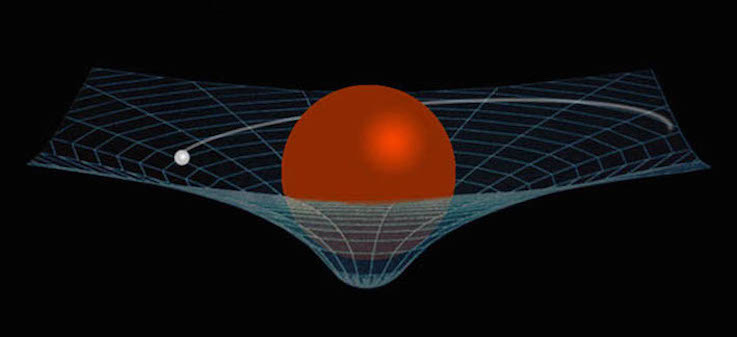In the year 1905, at the age of 26, a young Albert Einstein published four academic papers he had spent the last decade working on. The first one explained how light could knock electrons out of ordinary objects (called photoelectric effect). The second one described the chaotic movement of molecules in a fluid (Brownian Movement) and the third one introduced the world to mass-energy equivalence (E=mc2). But even after these monumental deductions what rocked the physics world tenfold was contained in the fourth paper, titled 'Special Relativity'.
In this paper he established a link between space and time, which were and still generally are, concepts that ordinary people would identify as wildly incompatible. He said that the two were not separate entities, rather separate weaves of a fabric that exists all around us, a fourth dimension called spacetime. In simpler terms, if Space is the collection of all possible positions, then spacetime the collection of all possible (time,position) pairs. It is the movie-like arena where everything happens, has happened and will happen. But there was a problem. In the process of proving the existence of spacetime, Einstein realized that there was this one small variable that looked like it was causing ripples in its fabric. For the time being he ignored the effects of this variable and assumed spacetime to always be flat. It seemed as if these ripples appeared whenever there was an object of enormous mass in close proximity and caused them to not only pull nearby objects but very slightly even light itself. As you probably guessed this variable was gravity and its omittance warranted the "special" prefix to the paper. But how was it influencing the fourth dimension?
"The only thing that can move across dimensions, like time, is gravity."-Anne Hathaway, Interstellar
By 1916 Einstein had figured it out and published his conclusions in yet another paper named 'General Relativity', this time taking gravity into account. He said that massive objects like planets visibly distorted spacetime, and this distortion was felt by nearby objects as gravity. Still confused? Maybe this picture could help.

Now that you hopefully have an understanding of spacetime, let's do a small thought experiment. We know that huge objects can warp spacetime, and cause gravity to pull nearby objects. Now what if this object was unimaginably huge. Like beyond our knowledge of planets or stars. What if it was so large that spacetime bent so deep it almost punctured. Such an object would create a gravity so huge it would consume all the nearby objects (including light), which would further contribute to its gravity. This idea kept Stephen Hawking up several nights. He couldn't prove its existence but was sure that such an object's gravity is what held entire galaxies together. On April 10, 2019 a collaboration of scientists all over the world bore fruit and the first picture of a black hole was captured. Stephen was right, but sadly wasn't there to witness it.

That's it, we have now reached the line beyond which lies the world of Theoretical Physics, filled with desperate scientists trying to prove increasingly strange concepts which however may never occur in real life. It is not to be underestimated though, remember the black hole itself was pure hypothesis just a while ago. So for us tourists this is where our trip ends, for the other side is too dangerous for the unweary. If you are so daring as to venture forward, please go ahead. In fact, I shall give you a little push (over the edge). Although recently time travel has been completely ruled out, we might be able to go Faster Than Light. Others please follow me, let me lead you safely back to Earth.